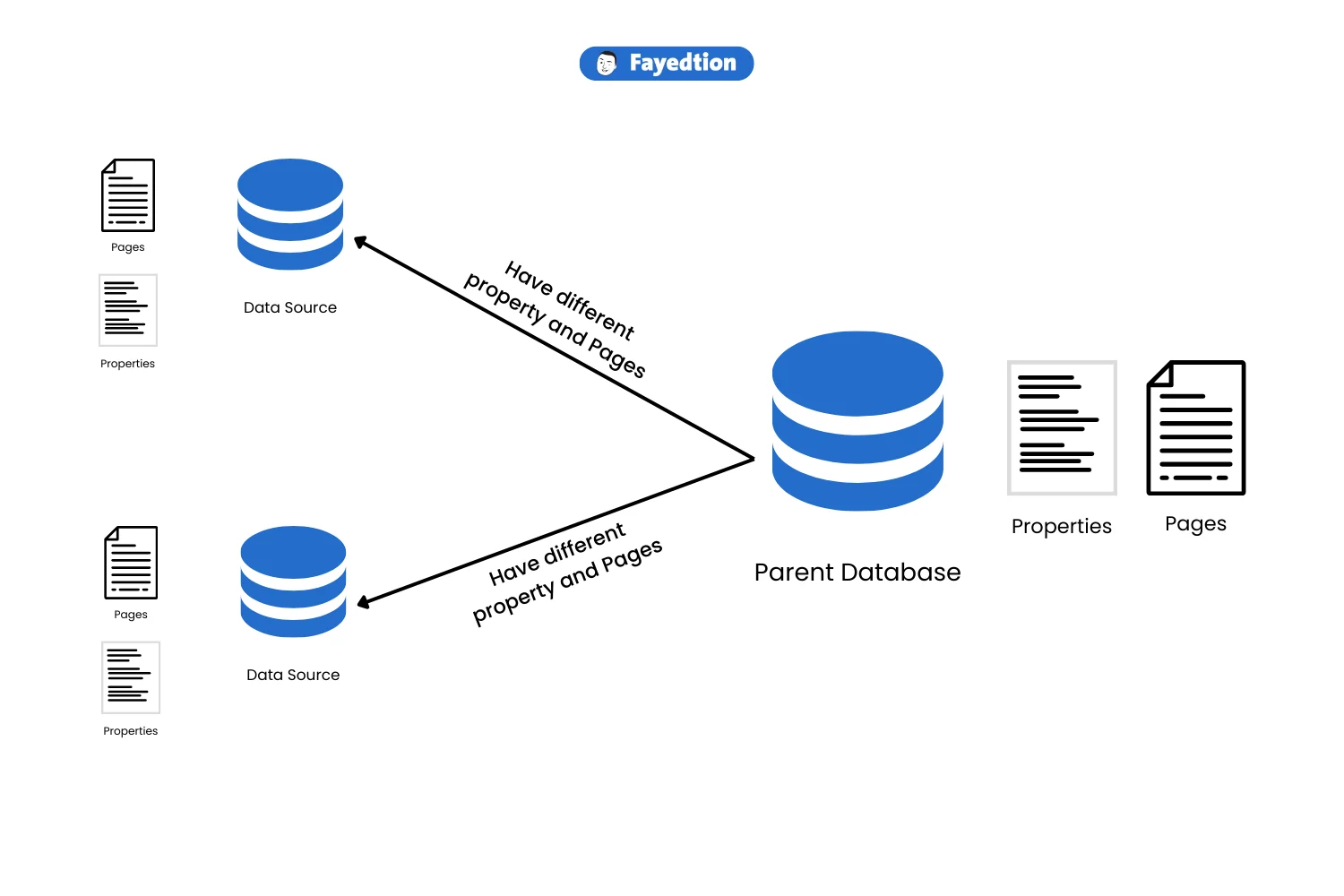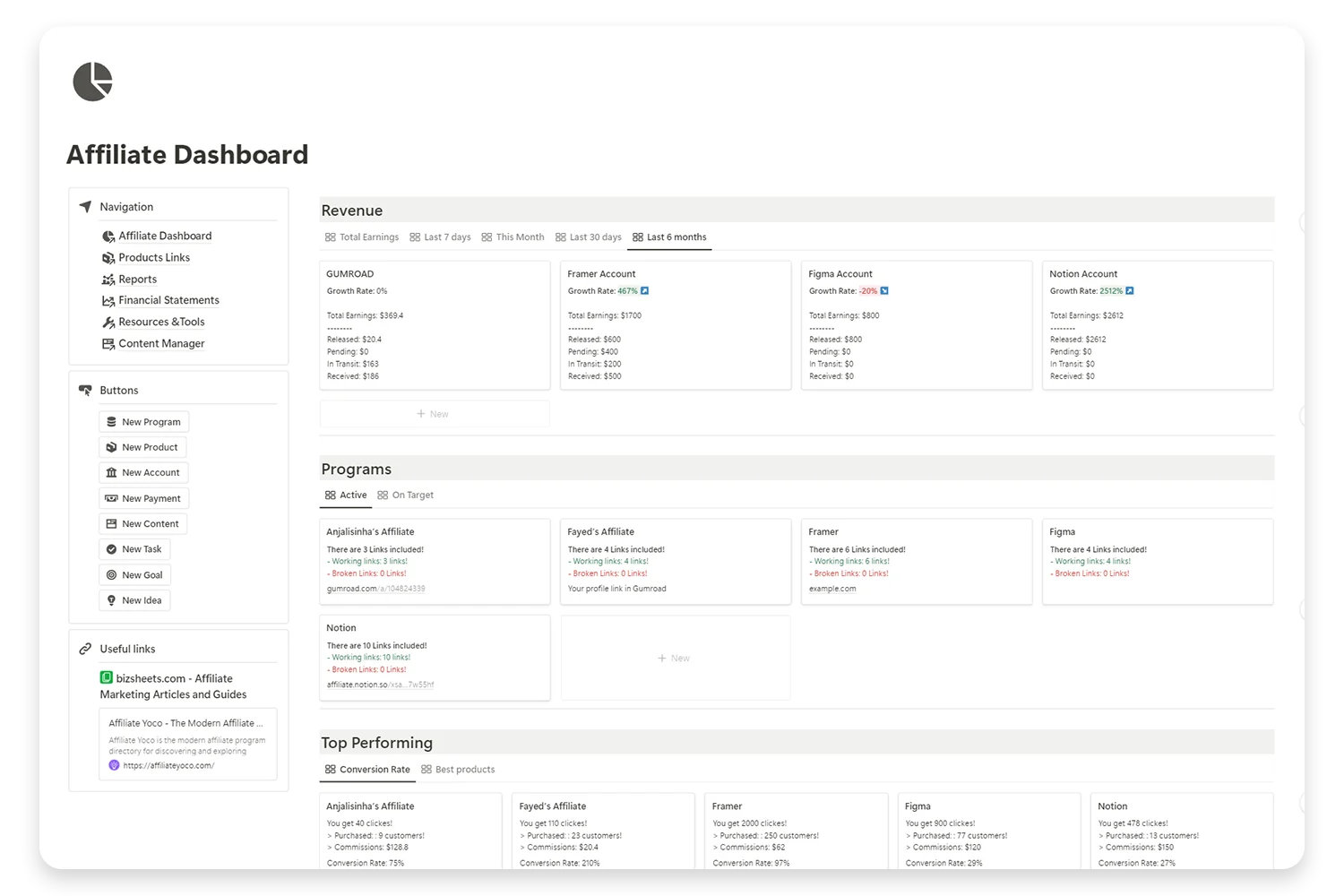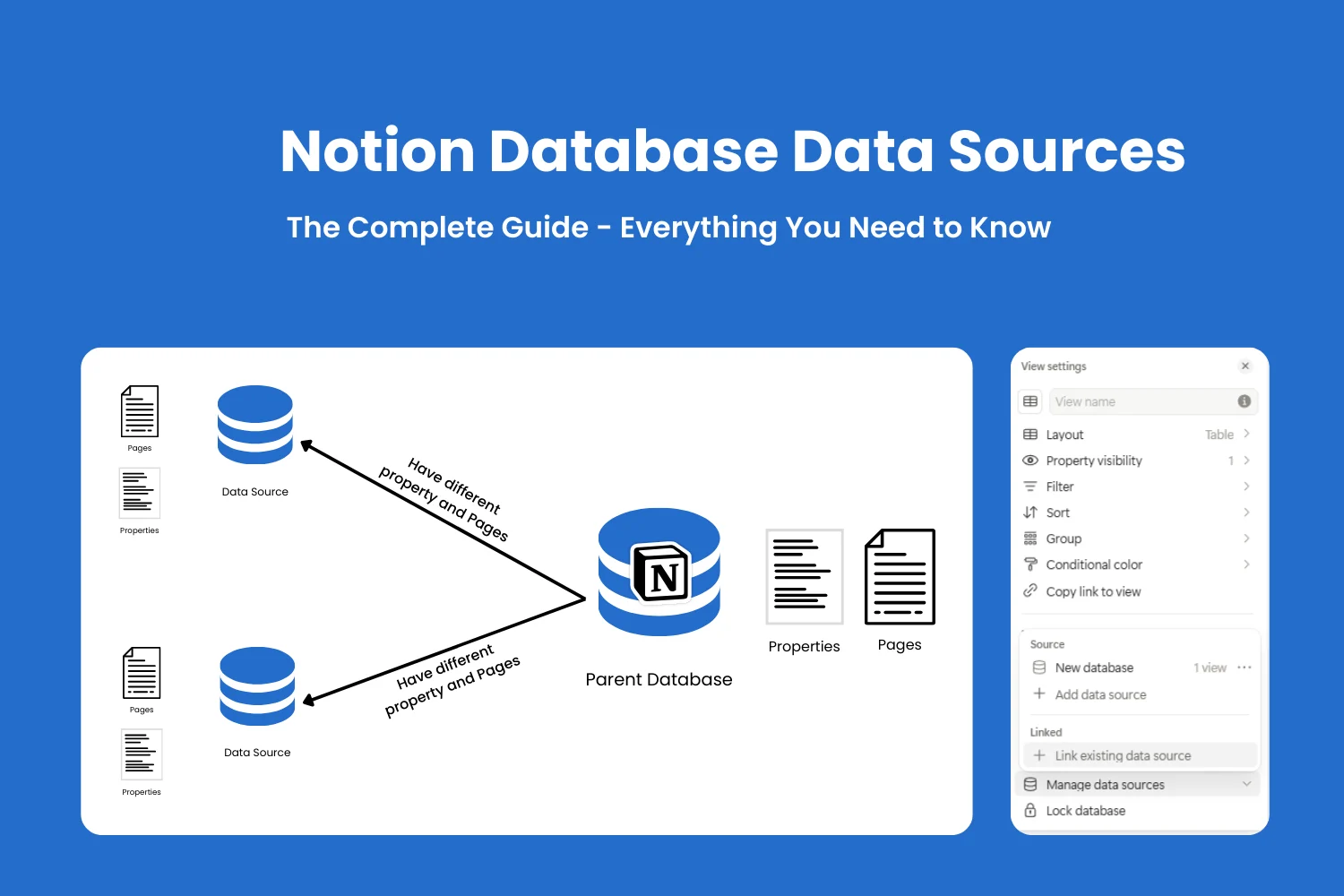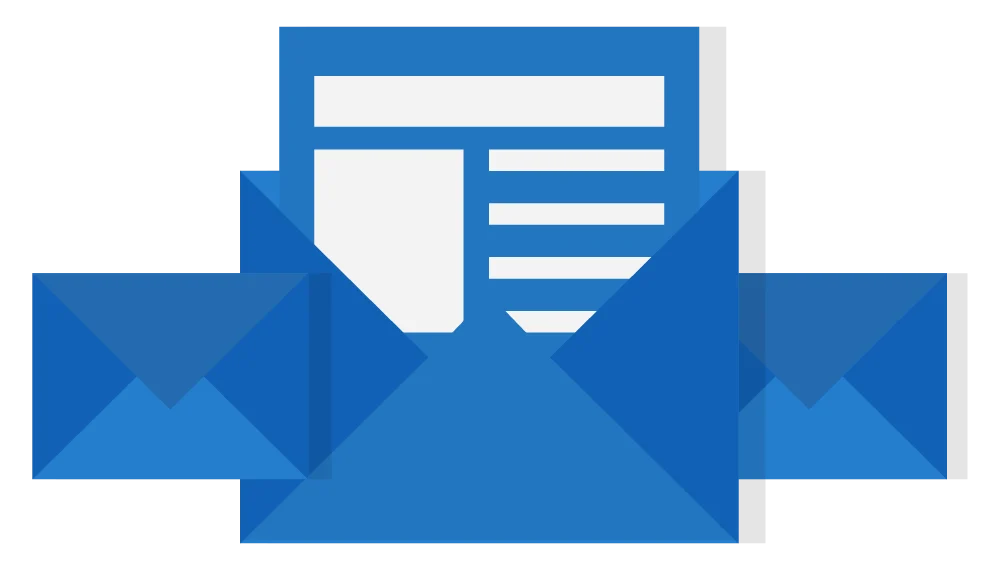Last updated on December 2nd, 2025 at 11:38 am
Notion has just released a game-changing update that transforms how we work with databases. The introduction of multiple data sources within a single database represents the most significant database enhancement in Notion’s history. This comprehensive guide will walk you through everything you need to know about this revolutionary feature.
What Are Data Sources in Notion Databases?
Before this update, each Notion database could only contain one set of properties. Now, you can add multiple data sources to the same database, creating separate tables with their own unique properties within a single database block.
Think of it this way: Instead of having separate databases for related information, you can now house multiple data types in one organized location.

Step-by-Step: How to Add Data Sources to Your Database
Step 1: Access Database Settings
- Open your existing database
- Click on the three dots (•••) in the top-right corner
- Select “Database settings” from the dropdown menu
Step 2: Add New Data Source
- In the settings menu, click on “Manage data sources”
- Click “Add data source”
- This creates a new table within your database with its own set of properties
Step 3: Customize Your Data Source
- Change the title: Give your new data source a descriptive name
- Update the icon: Choose an icon that represents this data type
- Hide titles: Toggle this option for a cleaner appearance if desired
Step 4: Configure Properties
- Add properties specific to this data source
- Each data source can have completely different property types
- Properties don’t need to match between data sources
Key Features and Capabilities
1. Cross-Database Views
You can now create views that display data from other databases and workspaces. This means:
- View data from separate databases within your current database
- Access information from different workspaces
- Create comprehensive dashboards without switching locations
2. Data Source Migration
Move data sources between databases effortlessly:
- Drag and drop data sources from one database to another
- No manual copying and pasting required
- Maintain all properties and data integrity during transfer
3. Enhanced Linking Options
Link views of data from other databases within your own databases:
- Create interconnected information systems
- Access all necessary information in one place
- Streamline your workflow significantly
Practical Use Cases for Multiple Data Sources
Project Management System
Database: Project Hub
- Data Source 1: Tasks (properties: task name, assignee, due date, status)
- Data Source 2: Expenses (properties: amount, category, date, receipt)
- Data Source 3: Resources (properties: resource name, type, availability)
Knowledge Management
Database: Learning Center
- Data Source 1: Research Notes (properties: topic, source, date, tags)
- Data Source 2: Book Summaries (properties: title, author, rating, key insights)
- Data Source 3: Course Materials (properties: course name, module, progress)
Contact Management
Database: Network Hub
- Data Source 1: Professional Contacts (properties: name, company, role, email)
- Data Source 2: Personal Contacts (properties: name, relationship, phone, birthday)
- Data Source 3: Vendors (properties: company name, service, contract details)
Team Collaboration
Database: Team Central
- Data Source 1: Personal Tasks (properties: task, priority, deadline)
- Data Source 2: Team Tasks (properties: task, team member, status, dependencies)
- Data Source 3: Team Updates (properties: update, date, team, impact)
Important Limitations to Consider
Filtering and Sorting Restrictions
- Individual data source filtering: Not available – filters apply to the entire database
- Sorting limitations: Sorting affects all data sources within the database
- View customization: Limited compared to separate databases
Database vs. Page Limitation
- This feature only applies to databases, not individual pages
- You cannot create multiple property sets for pages within a database
- Notion has indicated this feature may come to pages in future updates
Permission Changes
- Permissions are now set at the database block level
- Changes apply to all data sources within that database block
- More granular control requires separate database blocks
API and Integration Impact
Developer Considerations
This update significantly affects:
- Notion API: Changes in how databases are accessed and structured
- Third-party integrations: May require updates to maintain compatibility
- Automation tools: Workflow adjustments needed for proper functionality
Transition Period Recommendations
- Audit existing integrations: Check all third-party tools and automations
- Test workflows: Ensure critical processes still function correctly
- Update documentation: Revise any internal guides or procedures
- Communicate changes: Inform team members about new database structure
Advanced Tips for Maximizing Data Sources
Organization Strategies
- Logical grouping: Group related data types within single databases
- Consistent naming: Use clear, descriptive names for data sources
- Icon system: Develop a consistent icon system for easy identification
- Template creation: Build templates with pre-configured data sources
Workflow Optimization
- Central dashboards: Create master databases that pull from multiple sources
- Cross-referencing: Use relations to connect data between sources
- View filtering: Set up specific views for different data source combinations
- Regular maintenance: Periodically review and optimize data source structure
Migration Strategy for Existing Workspaces
Step 1: Assessment Phase
- Inventory current databases: List all existing databases and their purposes
- Identify relationships: Map connections between different databases
- Prioritize conversions: Determine which databases would benefit most from consolidation
Step 2: Planning Phase
- Design new structure: Plan how multiple databases will be combined
- Property mapping: Ensure all necessary properties are included
- Data backup: Create backups before making significant changes
Step 3: Implementation Phase
- Start small: Begin with less critical databases
- Test thoroughly: Verify all data transfers correctly
- Update links: Ensure all internal links and references still work
- Train users: Help team members understand the new structure
Future Implications and Possibilities
Enhanced Productivity
The multiple data sources feature represents a shift toward more integrated workspace management:
- Reduced context switching: Less jumping between different databases
- Improved data relationships: Better connections between related information
- Streamlined workflows: More efficient daily operations
Collaboration Benefits
Teams can now:
- Share comprehensive datasets: All related information in one location
- Maintain consistency: Unified approach to data organization
- Improve communication: Clearer information hierarchies
Conclusion
Notion’s multiple data sources feature fundamentally changes how we approach database organization and management. While there are some limitations to consider, the benefits far outweigh the constraints for most use cases.
This update enables more sophisticated information architecture, better team collaboration, and significantly improved workspace organization. By understanding and implementing these features strategically, you can transform your Notion workspace into a more powerful and efficient productivity system.
Key Takeaways:
- Multiple data sources allow different property sets within one database
- Cross-database views enable comprehensive information dashboards
- Migration between databases is now seamless and efficient
- Some limitations exist around filtering and page-level implementation
- API changes require attention for existing integrations
Start experimenting with this feature in non-critical databases first, then gradually implement it across your workspace as you become more comfortable with the new capabilities. The potential for improved organization and productivity is substantial, making this one of Notion’s most valuable updates to date.

Elevate Your Affiliate Business with Expert Insight Management
Take control of your affiliate marketing with our comprehensive Notion template. Designed for efficiency and clarity, this template helps you manage your affiliate programs, track earnings, and optimize your strategies.


